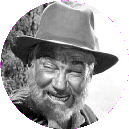 Dr. Strangelove or: How I Learned to Stop Worrying and Love the Bomb
(1964)
Dr. Strangelove or: How I Learned to Stop Worrying and Love the Bomb
(1964)
Bodil Award for Best Non-American Film (Stanley Kubrick)
British Academy Film Award for Best British Film (Stanley Kubrick)
Hugo Award for Best Dramatic Presentation (Peter George, Stanley Kubrick, Terry Southern)
National Film Registry
New York Film Critics Circle Award for Best Director (Stanley Kubrick)
United Nations AwardsAward nominations: Academy Award for Best Actor (Peter Sellers)
Academy Award for Best Director (Stanley Kubrick)
Academy Award for Best Picture (Stanley Kubrick)
Academy Award for Best Writing, Adapted Screenplay (Stanley Kubrick, Peter George, Terry Southern)
BAFTA Award for Best British Screenplay
BAFTA Award for Best Film
British Academy Film Award for Best British Film
Directors Guild of America Award for Outstanding Directing – Feature Film
Hugo Award for Best Dramatic PresentationAward details: (details at IMDb)
Below are links to reviews and further info from selected film sites. Links surrounded by a solid border lead directly to a page about this movie on that site. Links surrounded by a dashed border lead to a Google search for this exact movie title on that site. You may find it more efficient to open these links in separate browser tabs. Click Show More / All / Default to see more available links or return to the standard default selection. More (or fewer) choices of links can be selected via Options, and you can save your personal defaults (requires login).
Dr. Strangelove or: How I Learned to Stop Worrying and Love the Bomb, more commonly known simply as Dr. Strangelove, is a 1964 satirical black comedy film that satirizes the nuclear scare. Under the American studio Columbia Pictures, the film was directed, produced, and co-written by Stanley Kubrick, stars Peter Sellers and George C. Scott, and features Sterling Hayden, Keenan Wynn, and Slim Pickens. Production took place in the United Kingdom. The film is loosely based on Peter George's Cold War thriller novel Red Alert. The story concerns an unhinged United States Air Force general who orders a first strike nuclear attack on the Soviet Union. It follows the President of the United States, his advisers, the Joint Chiefs of Staff, and a Royal Air Force officer as they try to recall the bombers to prevent a nuclear apocalypse. It separately follows the crew of one B-52 bomber as they try to deliver their payload. In 1989, the United States Library of Congress included it in the first group of films selected for preservation in the National Film Registry. It was listed as number three on AFI's 100 Years...100 Laughs list.
